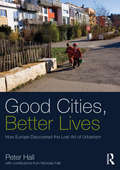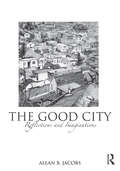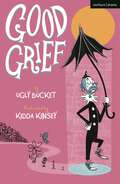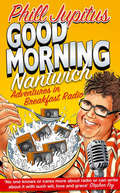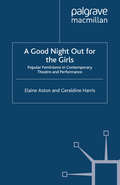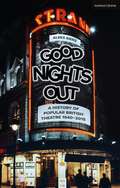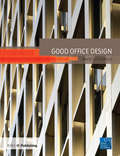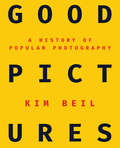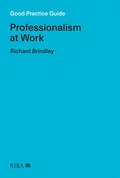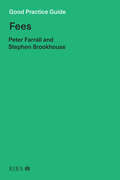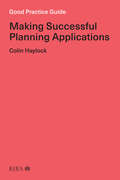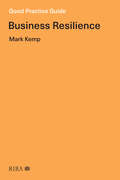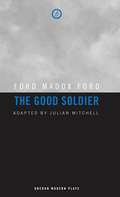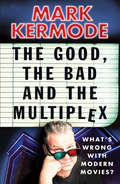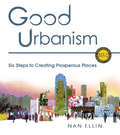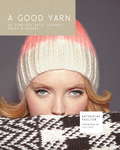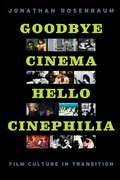- Table View
- List View
Good Cities, Better Lives: How Europe Discovered the Lost Art of Urbanism (Planning, History and Environment Series)
by Peter HallThis book has one central theme: how, in the United Kingdom, can we create better cities and towns in which to live and work and play? What can we learn from other countries, especially our near neighbours in Europe? And, in turn, can we provide lessons for other countries facing similar dilemmas? Urban Britain is not functioning as it should. Social inequalities and regional disparities show little sign of going away. Efforts to generate growth, and spread it to the poorer areas of cities, have failed dismally. Much new urban development and redevelopment is not up to standard. Yet there are cities in mainland Europe, which have set new standards of high-quality sustainable urban development. This book looks at these best-practice examples – in Germany, the Netherlands, France and Scandinavia, – and suggests ways in which the UK and other countries could do the same. The book is in three parts. Part 1 analyses the main issues for urban planning and development – in economic development and job generation, sustainable development, housing policy, transport and development mechanisms – and probes how practice in the UK has fallen short. Part Two embarks on a tour of best-practice cities in Europe, starting in Germany with the country’s boosting of its cities’ economies, moving to the spectacularly successful new housing developments in the Netherlands, from there to France’s integrated city transport, then to Scandinavia’s pursuit of sustainability for its cities, and finally back to Germany, to Freiburg – the city that ‘did it all’. Part Three sums up the lessons of Part Two and sets out the key steps needed to launch a new wave of urban development and regeneration on a radically different basis.
The Good City: Reflections and Imaginations
by Allan B. JacobsCities, Allan B. Jacobs contends, ought to be magnificent, beautiful places to live. They should be places where people can be fulfilled, where they can be what they can be, where there is freedom, love, ideas, excitement, quiet and joy. Cities ought to be the ultimate manifestation of society’s collective achievements. Allan B. Jacobs is one of the world’s best known planners and urban design practitioners, with a long and distinguished international career. Drawing on his professional experience of almost sixty years, Jacobs guides the reader through the lessons he’s learnt as a planner and lover of cities. Cities from Brazil, Italy, India, Japan, China and the US are featured. Written with a wonderfully engaging, humorous tone and Jacobs’ own drawings, The Good City transfers lessons on city design, building and urban change to all those willing to help cities become the magnificent, beautiful places they should be - and encourages all inhabitants to learn to appreciate and explore their own cities.
The Good City: Reflections and Imaginations
by Allan B. JacobsCities, Allan B. Jacobs contends, ought to be magnificent, beautiful places to live. They should be places where people can be fulfilled, where they can be what they can be, where there is freedom, love, ideas, excitement, quiet and joy. Cities ought to be the ultimate manifestation of society’s collective achievements. Allan B. Jacobs is one of the world’s best known planners and urban design practitioners, with a long and distinguished international career. Drawing on his professional experience of almost sixty years, Jacobs guides the reader through the lessons he’s learnt as a planner and lover of cities. Cities from Brazil, Italy, India, Japan, China and the US are featured. Written with a wonderfully engaging, humorous tone and Jacobs’ own drawings, The Good City transfers lessons on city design, building and urban change to all those willing to help cities become the magnificent, beautiful places they should be - and encourages all inhabitants to learn to appreciate and explore their own cities.
Good Grief (Modern Plays)
by Ugly BucketWinner of New Diorama, Underbelly and Methuen Drama's Untapped Award 2022A dying man's last wish: for his friends to create a show about death. Will it be subtle? Will it be sophisticated? Probably not, but it's his funeral. Literally.Multi-award-winning physical comedy company Ugly Bucket process the death of a friend in the only way they know how – through a kinetic maelstrom of outrageous clowning, personal testimony and a thumping techno soundtrack.This edition of Good Grief is richly illustrated by artist Kidda Kinsey, in an explosion of whimsical art that brings the show sharply from the stage onto the page. It was published to coincide with the production at Underbelly Cowgate, Edinburgh, in August 2022.
Good Morning Nantwich: Adventures In Breakfast Radio
by Phill JupitusWhat possesses a right-minded comedian to quit the day job for life as a breakfast radio DJ?
A Good Night Out for the Girls: Popular Feminisms in Contemporary Theatre and Performance (Performance Interventions)
by E. Aston G. HarrisMoving across the boundaries of mainstream and experimental circuits, from the affective pleasures of commercially successful shows such as Calendar Girls and Mamma Mia! to the feminist possibilities of new burlesque and stand-up, this book offers a lucid and accessible account of popular feminisms in contemporary theatre and performance.
Good Nights Out: A History of Popular British Theatre 1940–2015
by Aleks SierzLondon's West End is a global success story, staging phenomenal hit shows that have delighted millions of spectators and generated billions of pounds in revenue. In Good Nights Out, Aleks Sierz provides a thematic survey of such popular theatre shows that were enormous commercial successes over the past 75 years. He argues that these outstanding hits have a lot to say about the collective cultural, social and political attitudes and aspirations of the country, and about how our national identity - and theatre's role in creating it - has evolved over the decades. The book spans a range of work from almost forgotten plays, such as R. F. Delderfield's Worm's Eye View and Hugh Hastings's Seagulls Over Sorrento, to well-known mega-hits, such as The Mousetrap and The Phantom of the Opera. Such popular work has tended to be undervalued by some critics and commentators mainly because it has not been thought to be a suitable subject for inclusion in the canon of English Literature. By contrast, Sierz demonstrates that genres such as the British musical, light comedy, sex farce or murder mystery are worth appreciating not only for their intrinsic theatrical qualities, but also as examples of the dream life of the British people. The book challenges the idea that mega-hits are merely escapist entertainments and instead shows how they contribute to the creation of powerful myths about our national life. The analysis of such shows also points towards the possibility of creating an alternative history of postwar British theatre.
Good Nights Out: A History of Popular British Theatre 1940–2015
by Aleks SierzLondon's West End is a global success story, staging phenomenal hit shows that have delighted millions of spectators and generated billions of pounds in revenue. In Good Nights Out, Aleks Sierz provides a thematic survey of such popular theatre shows that were enormous commercial successes over the past 75 years. He argues that these outstanding hits have a lot to say about the collective cultural, social and political attitudes and aspirations of the country, and about how our national identity - and theatre's role in creating it - has evolved over the decades. The book spans a range of work from almost forgotten plays, such as R. F. Delderfield's Worm's Eye View and Hugh Hastings's Seagulls Over Sorrento, to well-known mega-hits, such as The Mousetrap and The Phantom of the Opera. Such popular work has tended to be undervalued by some critics and commentators mainly because it has not been thought to be a suitable subject for inclusion in the canon of English Literature. By contrast, Sierz demonstrates that genres such as the British musical, light comedy, sex farce or murder mystery are worth appreciating not only for their intrinsic theatrical qualities, but also as examples of the dream life of the British people. The book challenges the idea that mega-hits are merely escapist entertainments and instead shows how they contribute to the creation of powerful myths about our national life. The analysis of such shows also points towards the possibility of creating an alternative history of postwar British theatre.
Good Office Design
by David LittlefieldThis book examines the trends and innovations at the cutting edge of office design in the UK today. Selected from British Council for Offices Award winners since 2002 and interpreting empirical analyses by Davis Langdon, the varied and stunningly illustrated case studies presented here demonstrate the latest thinking from the world of workplace design. Taken together, they offer insight and inspiration for architects, developers, clients and anyone interested in getting the very best out of places of work. The text is sharp and authoritative, and complemented by colour photographs, floor plans, elevations and detail drawings. The chapters are organised into salient topics the Workplace, Location, Structure, Cost and Sustainability but along the way take account of numerous critical issues such as light levels and staff amenities. A wide-ranging end chapter, written by Jeremy Myerson and Paul Warner, knits together contemporary socio-cultural influences to imagine the future of the office.
Good Office Design
by David LittlefieldThis book examines the trends and innovations at the cutting edge of office design in the UK today. Selected from British Council for Offices Award winners since 2002 and interpreting empirical analyses by Davis Langdon, the varied and stunningly illustrated case studies presented here demonstrate the latest thinking from the world of workplace design. Taken together, they offer insight and inspiration for architects, developers, clients and anyone interested in getting the very best out of places of work. The text is sharp and authoritative, and complemented by colour photographs, floor plans, elevations and detail drawings. The chapters are organised into salient topics the Workplace, Location, Structure, Cost and Sustainability but along the way take account of numerous critical issues such as light levels and staff amenities. A wide-ranging end chapter, written by Jeremy Myerson and Paul Warner, knits together contemporary socio-cultural influences to imagine the future of the office.
Good Pictures: A History of Popular Photography
by Kim BeilA picture-rich field guide to American photography, from daguerreotype to digital. We are all photographers now, with camera phones in hand and social media accounts at the ready. And we know which pictures we like. But what makes a "good picture"? And how could anyone think those old styles were actually good? Soft-focus yearbook photos from the '80s are now hopelessly—and happily—outdated, as are the low-angle portraits fashionable in the 1940s or the blank stares of the 1840s. From portraits to products, landscapes to food pics, Good Pictures proves that the history of photography is a history of changing styles. In a series of short, engaging essays, Kim Beil uncovers the origins of fifty photographic trends and investigates their original appeal, their decline, and sometimes their reuse by later generations of photographers. Drawing on a wealth of visual material, from vintage how-to manuals to magazine articles for working photographers, this full-color book illustrates the evolution of trends with hundreds of pictures made by amateurs, artists, and commercial photographers alike. Whether for selfies or sepia tones, the rules for good pictures are always shifting, reflecting new ways of thinking about ourselves and our place in the visual world.
Good Practice Guide: Professionalism at Work
by Richard BrindleyProfessionalism is not automatic with qualification. It is decided by the manner in which you carry out your professional life – the conduct and qualities that you bring to your role. In architecture, it is founded on the principles of honesty, integrity and competence, and a concern for the environment and others. As a trusted expert, it is essential that you gain respect for your skills and knowledge while maintaining veracity and transparency in your relationships and dealings with clients, end users, design and construction professionals and the wider public. With a focus on professional judgement, this book is a personal guide on how to be a self-aware and successful practitioner, aspiring to best practice. It will give you the confidence to create meaningful industry connections and handle contractual disputes, insurance and negligence claims while maintaining a high standard of conduct. By paying attention to business planning, financial processes, good management and effective communication, it will help you to protect your practice’s reputation and increase profitability and cashflow. Ultimately, it will enable you to not only avoid professional pitfalls but to benefit from positive working relationships.
Good Practice Guide: Professionalism at Work
by Richard BrindleyProfessionalism is not automatic with qualification. It is decided by the manner in which you carry out your professional life – the conduct and qualities that you bring to your role. In architecture, it is founded on the principles of honesty, integrity and competence, and a concern for the environment and others. As a trusted expert, it is essential that you gain respect for your skills and knowledge while maintaining veracity and transparency in your relationships and dealings with clients, end users, design and construction professionals and the wider public. With a focus on professional judgement, this book is a personal guide on how to be a self-aware and successful practitioner, aspiring to best practice. It will give you the confidence to create meaningful industry connections and handle contractual disputes, insurance and negligence claims while maintaining a high standard of conduct. By paying attention to business planning, financial processes, good management and effective communication, it will help you to protect your practice’s reputation and increase profitability and cashflow. Ultimately, it will enable you to not only avoid professional pitfalls but to benefit from positive working relationships.
Good Practice Guide: Fees
by Patrick Farrall Stephen BrookhouseArchitects are finding the procurement landscape increasingly complex and competitive. This book shows practitioners the ways that fees are calculated, negotiated and managed. It will increase your understanding of the different fee-earning roles for architects, professional services contracts, how to calculate sustainable fee levels and improve negotiation skills. It also includes information on how to monitor and manage fees and the resources required to deliver projects, managing change in the scope of the project and related services, where to add value and to highlight risk areas that may impact on sustaining the business. Case studies explain good and bad practice to illustrate effective fee management, drawn from the authors’ direct experience as practitioners and investigating client complaints.
Good Practice Guide: Fees
by Patrick Farrall Stephen BrookhouseArchitects are finding the procurement landscape increasingly complex and competitive. This book shows practitioners the ways that fees are calculated, negotiated and managed. It will increase your understanding of the different fee-earning roles for architects, professional services contracts, how to calculate sustainable fee levels and improve negotiation skills. It also includes information on how to monitor and manage fees and the resources required to deliver projects, managing change in the scope of the project and related services, where to add value and to highlight risk areas that may impact on sustaining the business. Case studies explain good and bad practice to illustrate effective fee management, drawn from the authors’ direct experience as practitioners and investigating client complaints.
Good Practice Guide: Making Successful Planning Applications
by Colin HaylockHow do you obtain permission? How can you satisfactorily tackle objections? How can you convince planning officers of the value of your work? Drawing on substantial experience from both applicant and local planning authority perspectives, this book provides tactics and practical steps to help architects secure early validation of applications and successful outcomes. It’s a practical guide to understanding the planning system and maximizing the potential for successful outcomes. Readers will develop a greater understanding of the principles that are vital in the preparation and negotiation of applications against the very complex detail of regulatory arrangements.
Good Practice Guide: Making Successful Planning Applications
by Colin HaylockHow do you obtain permission? How can you satisfactorily tackle objections? How can you convince planning officers of the value of your work? Drawing on substantial experience from both applicant and local planning authority perspectives, this book provides tactics and practical steps to help architects secure early validation of applications and successful outcomes. It’s a practical guide to understanding the planning system and maximizing the potential for successful outcomes. Readers will develop a greater understanding of the principles that are vital in the preparation and negotiation of applications against the very complex detail of regulatory arrangements.
Good Practice Guide: Business Resilience
by Mark KempArchitecture can be a high risk and low-income profession. Planning to manage risks is essential. Workloads tend to be cyclical and managing lean periods and booms whilst being prepared for the next downturn is a key requirement. This book is a how-to guide to build business resilience into your architectural practice, offering methods for managing business-critical events and crises. It shows you how to analyse trouble, pre-emptively tackle pitfalls and gives you confidence in decision-making to stay ahead. Featuring case studies with expert insight into sole shareholder and director experience of a small practice, it’s aimed across all levels with straightforward, honest and accessible advice. It is structured with people and organisations as the core framework, exploring practice, staff, clients, projects, consultants and providers. It provides operational advice on the day-to-day running of practice and how to respond to disruption.
Good Practice Guide: Business Resilience
by Mark KempArchitecture can be a high risk and low-income profession. Planning to manage risks is essential. Workloads tend to be cyclical and managing lean periods and booms whilst being prepared for the next downturn is a key requirement. This book is a how-to guide to build business resilience into your architectural practice, offering methods for managing business-critical events and crises. It shows you how to analyse trouble, pre-emptively tackle pitfalls and gives you confidence in decision-making to stay ahead. Featuring case studies with expert insight into sole shareholder and director experience of a small practice, it’s aimed across all levels with straightforward, honest and accessible advice. It is structured with people and organisations as the core framework, exploring practice, staff, clients, projects, consultants and providers. It provides operational advice on the day-to-day running of practice and how to respond to disruption.
The Good Soldier: Dramatic Adaptation (Oberon Modern Plays)
by Ford Madox Ford“This is the saddest story I have ever heard.” So begins Julian Mitchell’s stage adaptation of Ford Madox Ford’s classic novel, The Good Soldier, a tale of deceit, delusion, and disintegrating marriage in pre-war Britain. Two seemingly upstanding couples find their friendships enveloped by scandal and tragedy, as the façade of wealth and privilege falls away and details of their indiscretions emerge.A fascinating new stage adaptation from an award-winning writer.
The Good, The Bad and The Multiplex: What's Wrong With Modern Movies?
by Mark KermodeIf blockbusters make money no matter how bad they are, then why not make a good one for a change?How can 3-D be the future of cinema when it's been giving audiences a headache for over a hundred years? Why pay to watch films in cinemas that don't have a projectionist but do have a fast-food stand? And, in a world where Sex and the City 2 was a hit, what are film critics even for? Outspoken, opinionated and hilariously funny, The Good, The Bad and The Multiplex is a must for anyone who has ever sat in an undermanned, overpriced cinema and wondered: 'How the hell did things get to be this terrible?'
Good Urbanism: Six Steps to Creating Prosperous Places (Metropolitan Planning + Design)
by Nan EllinWe all have a natural nesting instinct—we know what makes a good place. And a consensus has developed among urban planners and designers about the essential components of healthy, prosperous communities. So why aren’t these ideals being put into practice?In Good Urbanism, Ellin identifies the obstacles to creating thriving environments, and presents a 6-step process to overcome them: prospect, polish, propose, prototype, promote, present. Ellin illustrates the process with ten exemplary projects, from Envision Utah to Open Space Seattle.For planners, urban designers, community developers, and students of these fields, Ellin’s innovative approach offers an inspired, yet concrete path to building good places.
A Good Yarn: 30 Timeless Hats, Scarves, Socks And Gloves
by Katherine Poulton'I think we are all so increasingly obsessed and addicted to the new...that there's a danger of us forgetting to look back, appreciate and hold onto the amazing things, values, skills and traditions that previous generations and the past offer us. I'm really interested in marrying the old and the new...wearing a modern sleek designed hat, hand knitted old-school style in real wool!' - Lily Cole. These 30 projects are inspired by some of the most popular and fashionable accessories sold by the North Circular. Each project has clear instructions and beautiful photography. There is also advice on ethical buying and sourcing local, sustainable wool. Handmade doesn't have to mean compromising on style or quality.
Goodbye Cinema, Hello Cinephilia: Film Culture in Transition
by Jonathan RosenbaumThe esteemed film critic Jonathan Rosenbaum has brought global cinema to American audiences for the last four decades. His incisive writings on individual filmmakers define film culture as a diverse and ever-evolving practice, unpredictable yet subject to analyses just as diversified as his own discriminating tastes. For Rosenbaum, there is no high or low cinema, only more interesting or less interesting films, and the pieces collected here, from an appreciation of Marilyn Monroe’s intelligence to a classic discussion on and with Jean-Luc Godard, amply testify to his broad intellect and multi-faceted talent. Goodbye Cinema, Hello Cinephilia gathers together over fifty examples of Rosenbaum’s criticism from the past four decades, each of which demonstrates his passion for the way we view movies, as well as how we write about them. Charting our changing concerns with the interconnected issues that surround video, DVDs, the Internet, and new media, the writings collected here also highlight Rosenbaum’s polemics concerning the digital age. From the rediscovery and recirculation of classic films, to the social and aesthetic impact of technological changes, Rosenbaum doesn’t disappoint in assembling a magisterial cast of little-known filmmakers as well as the familiar faces and iconic names that have helped to define our era. As we move into this new decade of moviegoing—one in which Hollywood will continue to feel the shockwaves of the digital age—Jonathan Rosenbaum remains a valuable guide. Goodbye Cinema, Hello Cinephilia is a consummate collection of his work, not simply for fans of this seminal critic, but for all those open to the wide variety of films he embraces and helps us to elucidate.
Goodbye Cinema, Hello Cinephilia: Film Culture in Transition
by Jonathan RosenbaumThe esteemed film critic Jonathan Rosenbaum has brought global cinema to American audiences for the last four decades. His incisive writings on individual filmmakers define film culture as a diverse and ever-evolving practice, unpredictable yet subject to analyses just as diversified as his own discriminating tastes. For Rosenbaum, there is no high or low cinema, only more interesting or less interesting films, and the pieces collected here, from an appreciation of Marilyn Monroe’s intelligence to a classic discussion on and with Jean-Luc Godard, amply testify to his broad intellect and multi-faceted talent. Goodbye Cinema, Hello Cinephilia gathers together over fifty examples of Rosenbaum’s criticism from the past four decades, each of which demonstrates his passion for the way we view movies, as well as how we write about them. Charting our changing concerns with the interconnected issues that surround video, DVDs, the Internet, and new media, the writings collected here also highlight Rosenbaum’s polemics concerning the digital age. From the rediscovery and recirculation of classic films, to the social and aesthetic impact of technological changes, Rosenbaum doesn’t disappoint in assembling a magisterial cast of little-known filmmakers as well as the familiar faces and iconic names that have helped to define our era. As we move into this new decade of moviegoing—one in which Hollywood will continue to feel the shockwaves of the digital age—Jonathan Rosenbaum remains a valuable guide. Goodbye Cinema, Hello Cinephilia is a consummate collection of his work, not simply for fans of this seminal critic, but for all those open to the wide variety of films he embraces and helps us to elucidate.
